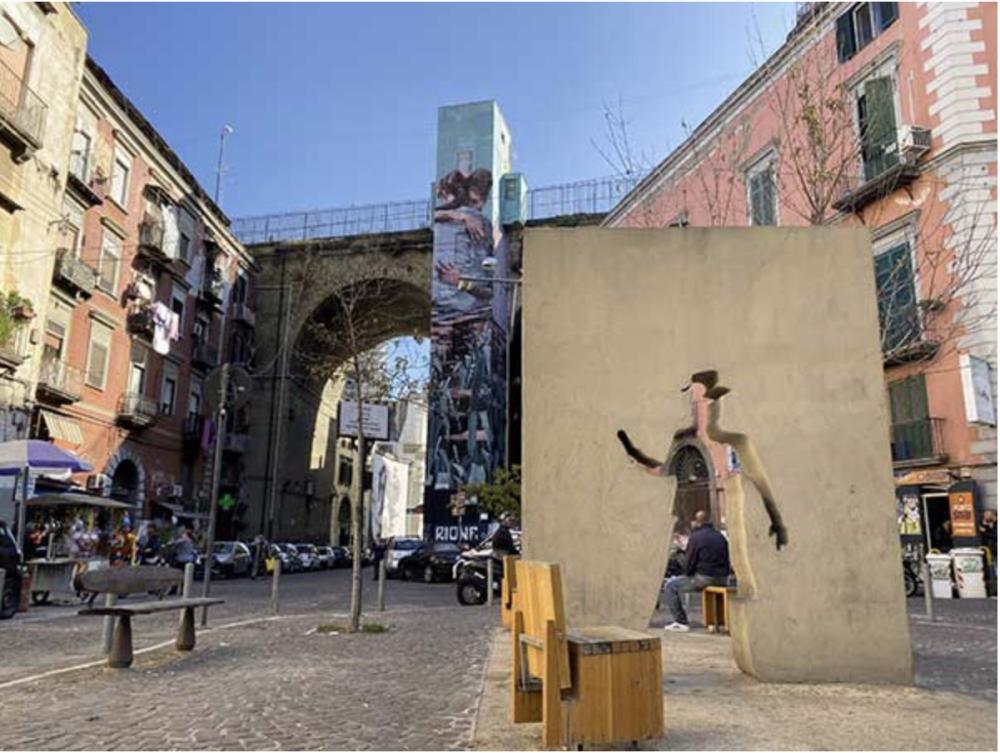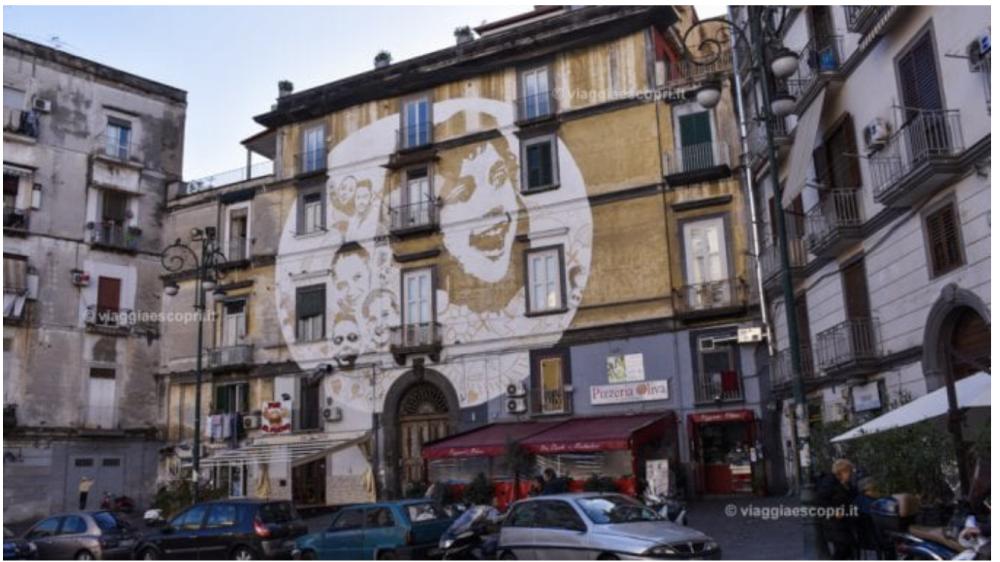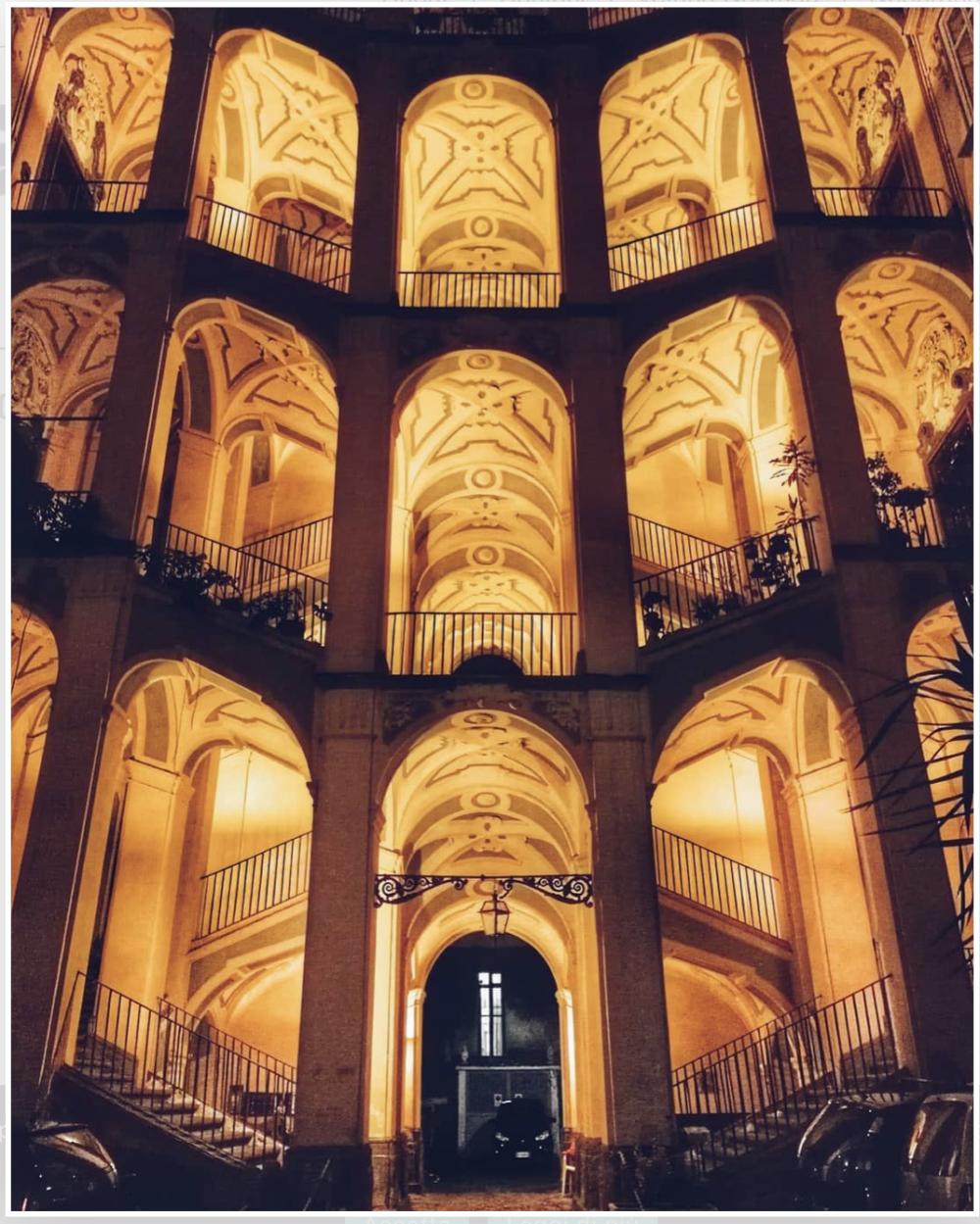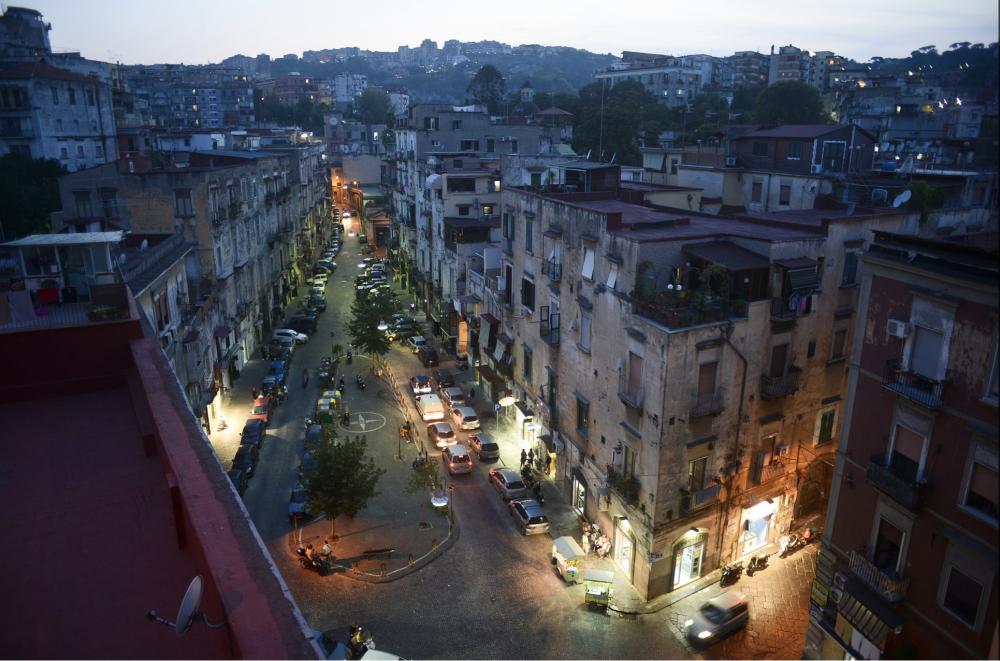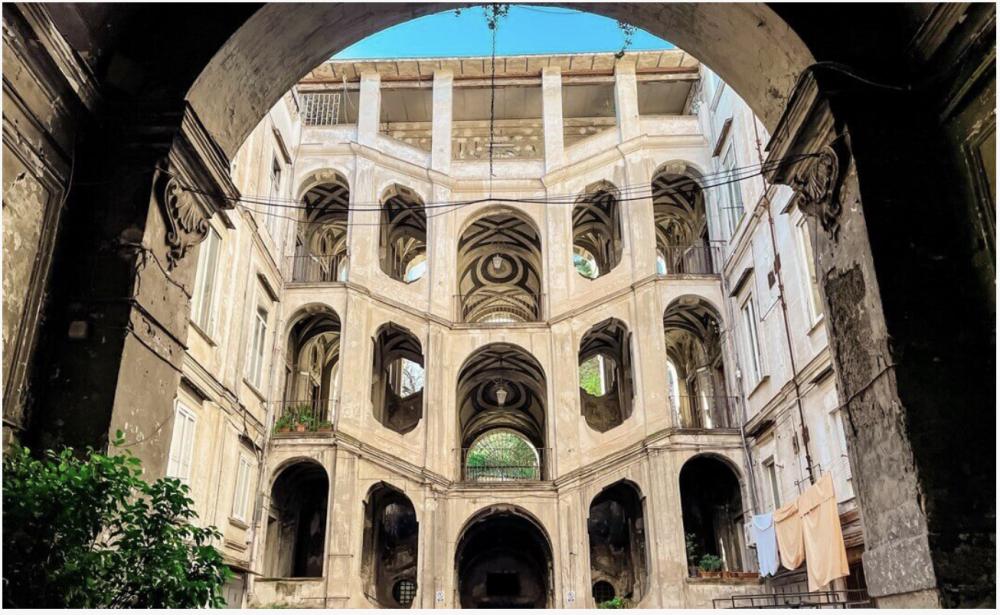Il rione Sanità fu edificato alla fine del XVI secolo in un vallone utilizzato sin dall′epoca greco-romana come luogo di sepoltura. In questo rione sono sorti ipogei ellenistici e catacombe paleocristiane, come quelle di San Gennaro e San Gaudioso, stringendo una forte relazione tra uomo e morte che si è protratta nei secoli, dimostrata dal cimitero delle Fontanelle, adoperato per ospitare le vittime della grande peste del 1656. Già nel XV secolo era situato tra le amene campagne su cui oggi sorge il rione, presso la paleocristiana basilica di San Gennaro fuori le mura e un monastero abbandonato, un lazzaretto per appestati, quello che sempre dopo la medesima infausta peste del 1656 fu ampliato e divenne l′attuale ospedale di San Gennaro dei Poveri. Perché sia stato collocato qui un ospizio per ammorbati lo si può riscontrare dall′etimo della zona, riconducibile alla sua salubritas sia naturale che sovrannaturale, dal momento che era allora incontaminata e sede delle catacombe responsabili di miracolose guarigioni. Inizialmente destinato ad accogliere importanti famiglie nobiliari e facoltosi borghesi della città (testimonianza di ciò, i maestosi palazzo Sanfelice a via Arena della Sanità e palazzo dello Spagnolo ai Vergini), col passare del tempo è diventata una delle zone più popolari di Napoli.
The Sanità district was built at the end of the 16th century in a valley used since the Greek-Roman era as a burial place. In this district, Hellenistic hypogea and early Christian catacombs have arisen, such as those of San Gennaro and San Gaudioso, forging a strong relationship between man and death that has continued over the centuries, demonstrated by the Fontanelle cemetery, used to house the victims of the great plague of 1656. Already in the fifteenth century it was located among the pleasant countryside on which the district stands today, near the paleochristian basilica of San Gennaro fuori le mura and an abandoned monastery, a lazaret for plague victims, the one that, after the same unfortunate plague of 1656, was enlarged and it became the current hospital of San Gennaro dei Poveri. Why a hospice for the sick was located here can be found from the etymology of the area, attributable to its natural and supernatural salubritas, since it was then uncontaminated and home to the catacombs responsible for miraculous healings. Initially intended to accommodate important noble and wealthy bourgeois families of the city (testimony of this, the majestic Palazzo Sanfelice in via Arena della Sanità and Palazzo dello Spagnolo ai Vergini), over time it has become one of the most popular areas of Naples.

